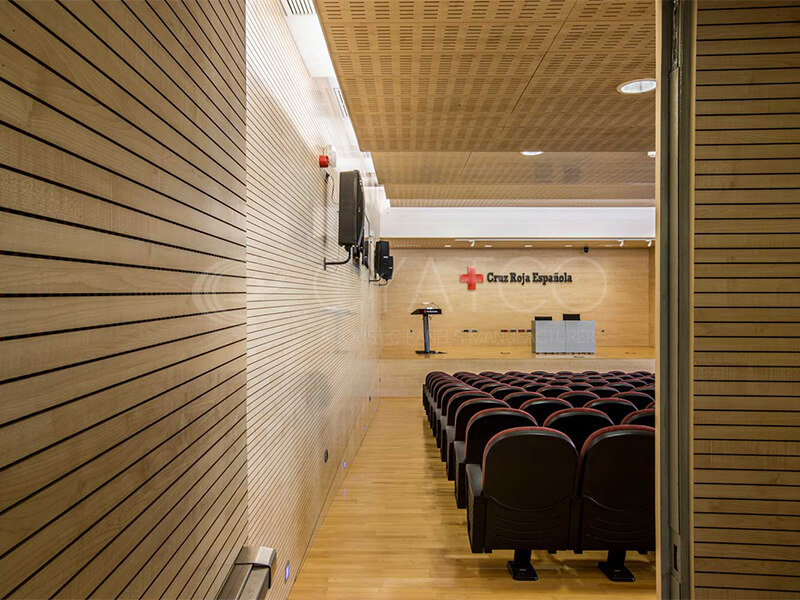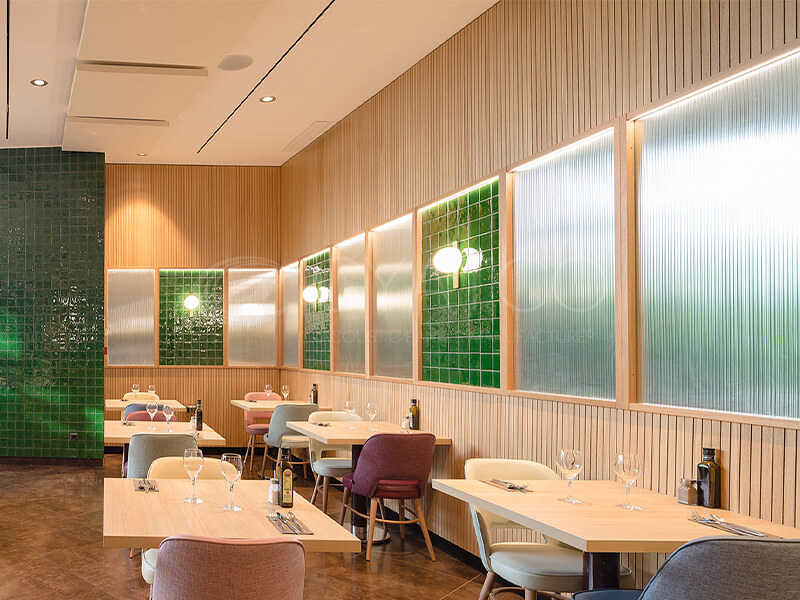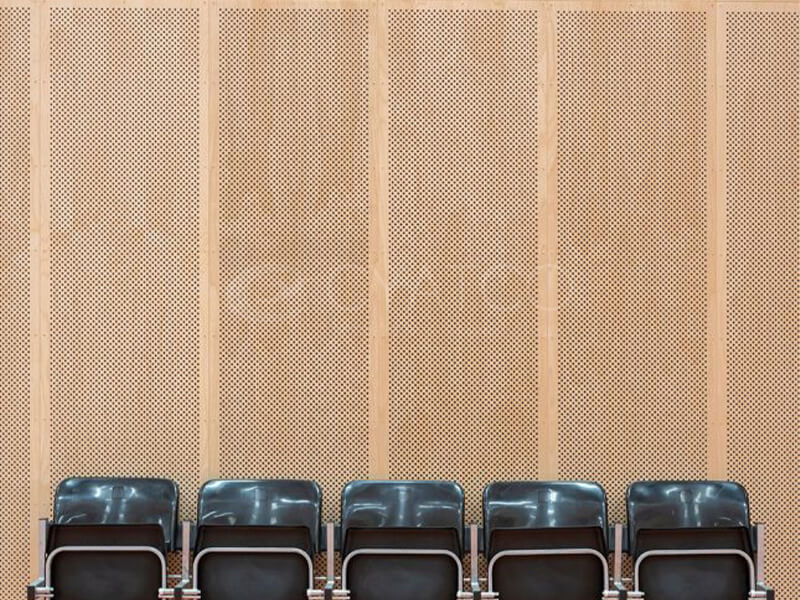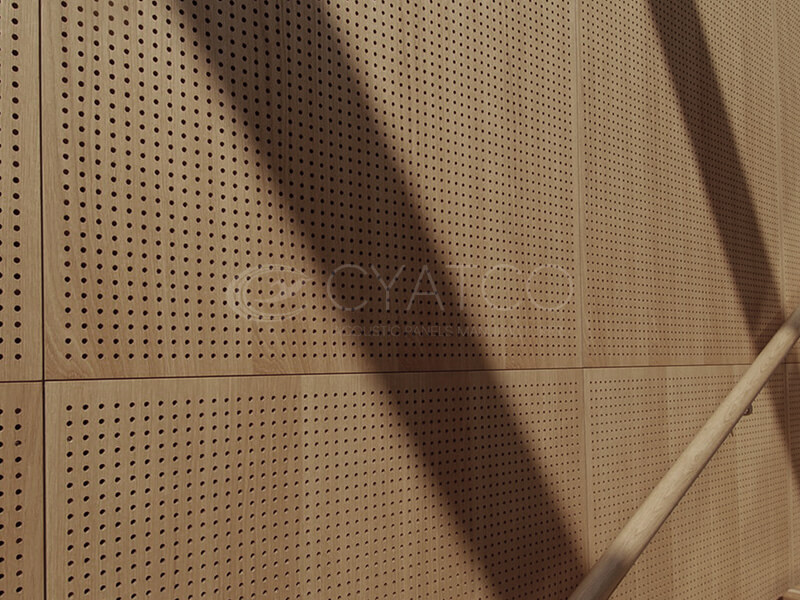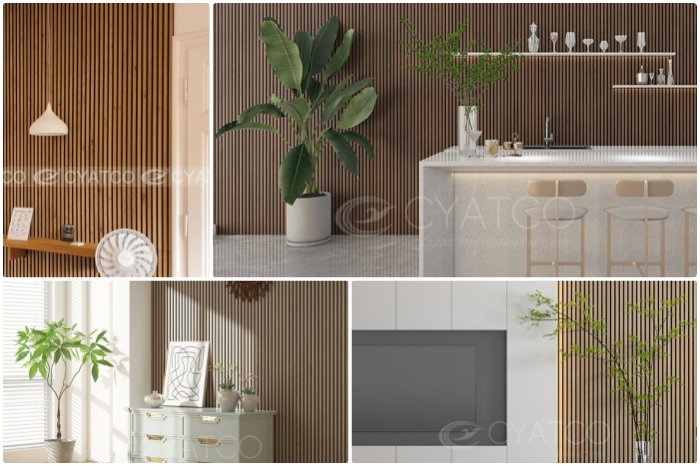What Tree Species Are Typically Used for Wooden Acoustic Panels?
The primary raw material for wooden acoustic panels—Medium-Density Fiberboard (MDF)—is not named after a specific tree species but is made from a blend of wood fibers.
1. Raw Materials for MDF
Medium Density Fiberboard (MDF) is manufactured by bonding fine wood fibers with adhesives under high temperature and pressure. The raw materials typically come from fast-growing plantations or wood processing byproducts (e.g., sawdust, wood chips). While MDF relies on mixed fibers rather than a single tree species, common source species include:
- Pine: Soft fibers, easy to process, and cost-effective.
- Poplar: Fast-growing with a fiber structure ideal for sound absorption; affordable.
- Eucalyptus: High-strength and uniform fibers, suitable for composite processing.
2. Applications of MDF in Wooden Acoustic Panels
Sound Absorption Principle:
MDF’s high porosity and loose fiber structure effectively absorbs sound wave energy.
Surface Treatments:
MDF can be laminated with decorative finishes (e.g., melamine veneer, natural wood veneer) to enhance aesthetics.
Common Types:
Grooved Wooden Acoustic Panels: MDF with front grooves and back perforations to create resonant sound-absorbing structures.
Perforated Wooden Acoustic Panels: MDF with round holes on both sides to improve sound absorption.
Wood Slat Wall: A specialized design combining unique MDF with acoustic fiber panels.
3. Advantages of MDF
- Excellent Workability: Easy to cut and drill, ideal for customized designs.
- Cost-Effective: Widely available raw materials support mass production.
4. Key Considerations
- Eco-Friendliness: Choose MDF with E0 or E1 formaldehyde emission ratings to meet safety standards.
- Moisture Resistance: Standard MDF swells when exposed to water; use moisture-resistant variants in damp environments.



